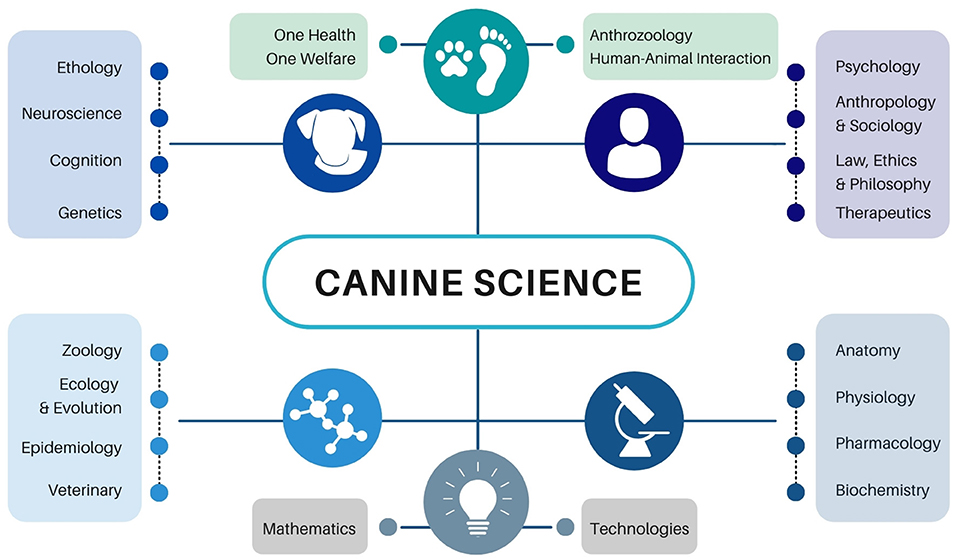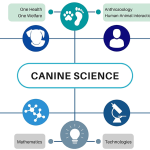Canine Research is a fascinating field exploring the intricate bond between dogs and humans, delving into their behavior, emotions, and cognitive capabilities. Through innovative studies like the dog empathy study at the Harvard Canine Brains Lab, researchers are uncovering how dogs perceive and respond to human emotions. As seen in the heartwarming insights from acclaimed photographer Elias Weiss Friedman of The Dogist, the relationship between dogs and their owners showcases an extraordinary emotional connection that enriches both species. The marriage of cutting-edge scientific research and the art of photography allows a unique perspective on canine behavior and the depths of the human-dog bond. In a world where our furry friends play pivotal roles in our lives, understanding their emotional landscapes through canine behavior research is more important than ever.
Exploring the dynamics of our furry companions isn’t just about understanding canine manners; it encompasses the profound ties that connect dogs and their human families. Terms like “dog cognition studies” and “canine emotional intelligence” reflect the growing interest in how these animals communicate and empathize with us. Not only do researchers utilize advanced methods, such as MRI scans at the Harvard Canine Brains Lab, but also everyday interactions captured by photographers like Elias Weiss Friedman highlight the joy and complexity of pet ownership. By investigating the depth of these relationships, we uncover the potential for dogs to provide emotional support and companionship, which can transform lives. Ultimately, studying the intersection of dog behavior and human connection deepens our appreciation for these remarkable animals.
Understanding Dog Empathy Through Canine Research
Recent studies in canine empathy have shed light on how dogs respond to human emotions and situations. At Harvard’s Canine Brains Lab, researchers like Erin Hecht investigate the brain activity of dogs when exposed to distress signals. This groundbreaking dog empathy study aims to uncover not just reactions but the underlying neural mechanisms that compel dogs to show compassion. The experiments often involve scenarios where dogs are encouraged to react to a seemingly injured person, allowing researchers to analyze their responses and deduce how deeply embedded empathy is in canine behavior.
The findings from these studies hold implications for understanding the dog-human bond. For instance, dogs like Sasha, a community engagement dog, have shown acute empathy by rushing to comfort a person in pain, suggesting that empathy is not just a learned behavior but also innate to their nature. Such canine behavior research unveils an emotional complexity that echoes the deep ties between dogs and their owners, indicating that domestic dogs have evolved alongside humans to understand and respond to our emotional states in profoundly impactful ways.
The Harvard Canine Brains Lab: A Hub for Dog Studies
The Harvard Canine Brains Lab stands at the forefront of canine behavior research, utilizing advanced imaging techniques like MRI to explore what’s happening in the minds of dogs. This innovative approach provides insight into various behavioral traits, such as aggression and trainability, linking them to neurological features. Researchers, including Erin Hecht, dedicate their time to identifying what makes certain breeds adept in various roles, from companionship to work. This level of scientific inquiry not only enhances our understanding of dogs but also bridges the gap between behavioral science and the emotional investment families have in their canine companions.
At the lab, the studies conducted also focus on children and their dogs, analyzing how these bonds develop and flourish. By bringing together dogs from different backgrounds, researchers hope to glean insights into the diverse cognitive styles among dog breeds. As dogs continue to be integral to human lifestyles, ongoing investigations at the Harvard Canine Brains Lab emphasize the necessity of studying their unique capabilities and how they enrich human experience.
The Intersection of Art and Science in Dog Photography
Elias Weiss Friedman, known for his work with The Dogist, illustrates how capturing the essence of dogs through photography complements scientific research. His ability to depict a dog’s emotional state ties back to studies on canine behavior, as images reflect genuine moments of connection, playfulness, and sometimes, profound sadness. In this light, photography becomes a powerful medium that not only showcases the beauty of canines but also serves as a visual research tool that may reveal insights into dogs’ emotions and experiences.
Friedman’s collaboration with researchers like Erin Hecht underscores the significance of visual representation in understanding canine behavior. By photographing dogs in moments that reveal their character, he provides a visual narrative that complements scientific findings. His upcoming book, “This Dog Will Change Your Life,” aims to merge storytelling with visual art, further enriching the viewer’s comprehension of the bond shared with dogs and emphasizing how these beings are not simply pets, but integral parts of human communities.
The Bond Between Dogs and Humans: More Than Just Companions
The relationship between dogs and humans is profound, transcending mere companionship. Erin Hecht points out that dogs have evolved alongside humans, adapting their cognitive skills to our social environments. This evolution manifests in their ability to form strong emotional bonds and interact with humans in uniquely supportive ways. As pets, dogs are not just animals; they are partners in socialization and emotional support, helping to strengthen community ties and serve as bridges between different people.
Understanding the dynamics of the human-canine bond is integral to insights provided by researchers and photographers alike. The affinity dogs display towards us speaks volumes about their deep-rooted evolutionary background. As they continue to play vital roles in our lives, acknowledging their contributions to both individual happiness and collective social bonding becomes essential. This highlights the need for ongoing studies to further unravel the intricacies of their behavioral traits and emotional intellect.
Impact of Canine Research on Dog Ownership
The insights derived from canine research significantly influence dog ownership and care practices. Findings from experiments conducted at Harvard suggest that understanding dog behavior can lead to better training methods, improved communication between dogs and their owners, and more effective ways to address behavioral issues. For instance, knowledge gained from empathy studies helps owners recognize their dog’s emotional needs, thus fostering a healthier and more fulfilling relationship.
Moreover, as studies reveal the cognitive capabilities of dogs, potential pet owners are encouraged to consider breed-specific traits that align with their lifestyle. Recognizing that dogs are adaptable yet possess unique characteristics allows individuals to make informed decisions about the breeds that will thrive in their homes. The impact of canine research, therefore, extends beyond simply understanding dogs; it actively enhances the quality of pet ownership.
The Role of Community in Canine Connections
Community plays a vital role in enriching the lives of both dogs and their owners. As noted by Friedman, the presence of dogs creates social connections that facilitate interactions between neighbors and fosters friendships. This sense of community is augmented by shared experiences and the incidental socialization that occurs when dog owners gather in parks or community events. These connections not only strengthen bonds within neighborhoods but also emphasize the importance of dogs as social catalysts.
Moreover, understanding the significance of canine companionship has broader implications for social structures. Dogs have the remarkable ability to reduce social anxiety and improve community engagement, suggesting that societies can benefit from initiatives that promote responsible dog ownership. The interplay between canine companionship and community bonding establishes an essential framework for nurturing healthy relationships among individuals, further enhancing community resilience and cohesion.
Exploring Canine Intelligence Through MRI Technology
The application of MRI technology in canine research opens new frontiers in our understanding of dog intelligence and behavior. Erin Hecht’s research showcases how brain imaging can reveal patterns associated with fear, aggression, and various learning abilities. This scientific approach not only enhances our perception of dogs as emotionally complex beings but also provides concrete data that can inform training methodologies and behavioral interventions.
As the scientific community delves deeper into the mysteries of canine cognition, understanding how dogs think and process information is essential for improving their quality of life. For instance, identifying cognitive strengths in certain breeds can lead to specialized training approaches, ensuring that dogs are engaged in activities that suit their natural abilities. This research ultimately promotes the welfare of dogs while enriching the owner-dog relationship, highlighting the profound connections we share.
The Legacy of The Dogist and Its Influence on Canine Understanding
Elias Weiss Friedman’s project, The Dogist, has evolved to become more than just an Instagram account; it serves as a platform that reflects the diverse narratives dogs share with humans. Through his photography, Friedman captures the individuality of thousands of dogs, imparting stories that resonate with pet owners and animal lovers alike. Each photograph offers a glimpse into the dog-human bond, illustrating the emotional depth and richness of these relationships.
The cultural influence of The Dogist emphasizes the importance of understanding dogs on various levels—from casual companionship to emotional support. By highlighting the beauty and challenges of canine life through his lens, Friedman encourages a deeper appreciation for pets and brings awareness to issues such as adoption and responsible dog ownership. This legacy is pivotal in shifting public perception of dogs, reinforcing their roles as companions that genuinely impact our lives.
Future Directions in Canine Research and Community Engagement
Looking ahead, the landscape of canine research is poised for significant advancements. Initiatives aimed at exploring the effects of early life experiences on dog behavior are increasingly gaining traction. By studying dogs with histories of trauma or stress, researchers like Erin Hecht are discovering how these experiences shape behavior and emotional responses. This exploration not only promises to improve training techniques but also advocates for compassionate care practices that take into account a dog’s background.
Community engagement is also likely to play a pivotal role in the future of canine research. Collaborations between research institutions and local dog owners can facilitate larger-scale studies, contributing to a richer understanding of the human-canine bond. As studies evolve and expand, there will be an increased emphasis on creating inclusive spaces where both dogs and their owners can thrive. These collaborative efforts will not only enhance the scientific community’s understanding of canine behavior but will also empower communities to embrace and celebrate the unique roles dogs play in society.
Frequently Asked Questions
What insights are gained from the dog empathy study conducted at the Harvard Canine Brains Lab?
The dog empathy study at the Harvard Canine Brains Lab, led by Erin Hecht, showcases how dogs respond to human emotions, particularly in distressing situations. The research illustrates that many dogs display empathy by offering comfort, such as licking faces when their owners feign injury, highlighting the deep bond between dogs and humans.
How does the Harvard Canine Brains Lab study canine behavior?
The Harvard Canine Brains Lab investigates canine behavior through advanced methods like MRI imaging, allowing researchers to observe the brain activity of dogs in response to various stimuli. This research reveals insights into dogs’ emotional and cognitive processes, enhancing our understanding of the human-dog bond.
What role does The Dogist play in canine behavior research?
The Dogist, founded by photographer Elias Weiss Friedman, plays a significant role in canine behavior research by documenting and sharing the diverse expressions and personalities of dogs. His work complements scientific studies by visually capturing the unique bond between dogs and their human companions, providing a cultural perspective on canine behaviors.
How do scientists like Erin Hecht explore the dogs and human bond in their research?
Scientists like Erin Hecht explore the dogs and human bond by integrating behavioral studies with neuroscience, analyzing how dogs interpret human emotions. By understanding the mechanisms behind this bond, research contributes to our knowledge of canine empathy and social skills, essential for fostering healthy relationships between dogs and humans.
How can participation in studies at the Harvard Canine Brains Lab benefit dog owners?
Participation in studies at the Harvard Canine Brains Lab can benefit dog owners by providing insights into their dog’s behavior and emotional health. Owners can contribute to groundbreaking canine behavior research, which aims to understand the effects of early life stress on dogs and how these factors influence their bond with humans.
| Key Point | Details |
|---|---|
| Research Focus | Erin Hecht studies dog brains using MRI technology; Elias Weiss Friedman captures dog expressions through photography. |
| Empathy in Dogs | Experiments show varying reactions of dogs (e.g. Sasha) to human emotions, highlighting their capacity for empathy. |
| Human-Canine Bond | Both researchers emphasize the unique bond shared between dogs and humans, shaped by evolutionary adaptations. |
| Behavioral Research | Hecht’s lab is looking for dogs with behavioral issues for research, and exploring child-dog interactions. |
| Community Impact | Friedman notes how dogs facilitate social interactions and foster community relationships among their owners. |
| Diversity in Breeds | Hecht explains variations in dog behavior and cognitive styles based on breeds and their historical roles. |
Summary
Canine Research has opened up new avenues for understanding the deep emotional and behavioral connections between humans and dogs. The insight gathered from studies, such as those conducted by Erin Hecht and visual representations by Elias Weiss Friedman, showcases not only the science behind dog cognition but also the profound bond that flourishes between species. Through this research, we continue to uncover the remarkable capabilities of dogs and the role they play in enriching human lives.










